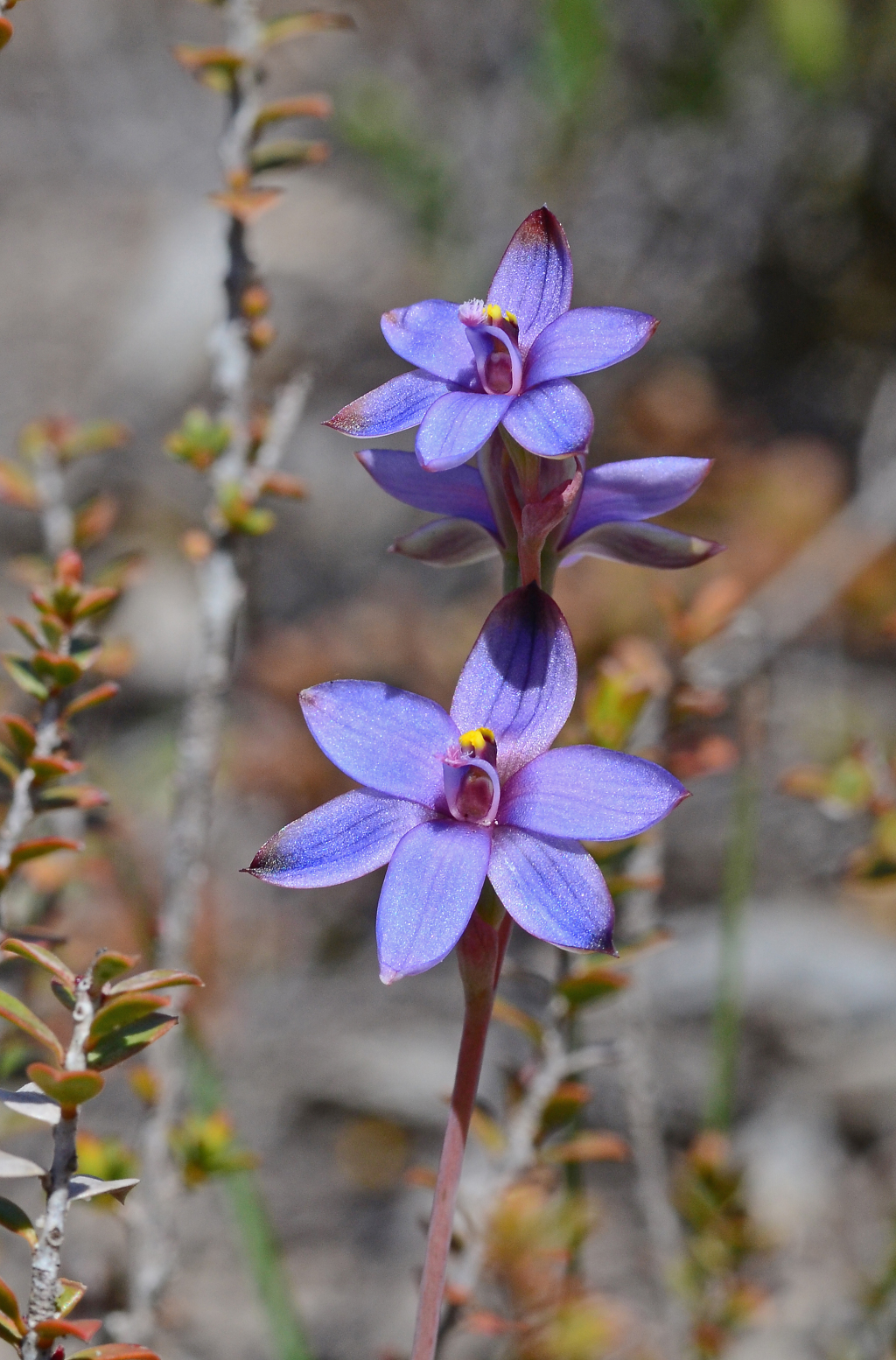Thelymitra azurea
R.S.RogersFlowering stem erect, straight to slightly flexuose, 13–45 cm tall, 1–2.2 mm diam., green or purplish. Leaf linear to filiform, 10–27 cm long, 3–8 mm wide, fleshy, canaliculate to conduplicate, ribbed abaxially, sheathing at base, dark green with a purplish base. Inflorescence 1–10-flowered. Sterile bract 1, rarely 2. Perianth segments ovate to ovate-lanceolate, 6–13 mm long, dark azure blue with darker longitudinal veins, often with mauve tonings, rarely pink. Column ovoid, 2.5–4.5 mm long, blue to purplish; mid-lobe slightly hooding the anther, expanded into an incurved arc subtending an angle of c. 90 deg., 0.5–1 mm long, 1–2 mm wide when flattened, blackish, apex toothed or warty, yellow; auxiliary lobes converging, fleshy, rod-like, blackish, apex toothed or warty, yellow; lateral lobes converging, porrect or obliquely erect, flat, tapering, each with white or purplish hairs along distal margins. Anther inserted towards base of column, apex ending in a short beak. Flowers Sep.–Dec.
LoM, MuM, Wim, GleP, GGr. Also SA. Widespread but uncommon in mallee scrublands, heathy woodlands and heathland on deep sand, sandy loam or peaty soils around swamp margins.
Flowers open freely on warm days and are most likely insect-pollinated.
Plants flower most abundantly the season following fires.
 Spinning
Spinning

